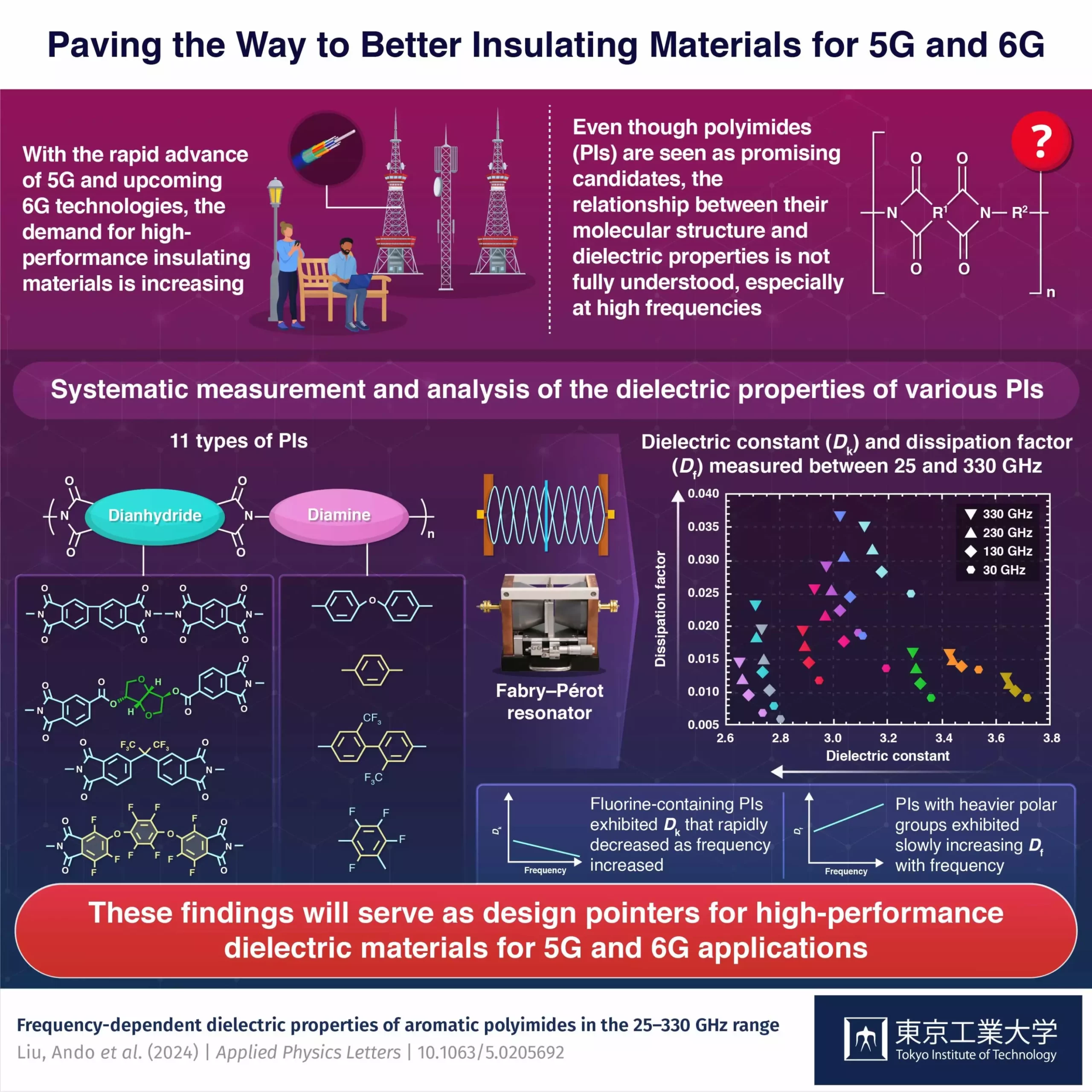The ever-evolving world of wireless communication technologies is always on the lookout for the next big breakthrough. As 5G technologies start to become more mainstream, researchers are already pushing the boundaries and looking towards the potential of 6G. However, one of the major challenges that researchers face with high-frequency operations is the detrimental effects on wireless communications. Signal attenuation and interference become more prominent, making it harder to maintain signal integrity. While glass- and ceramic-based insulating materials are currently dominant, their high cost and complexity hinder mass production, which is crucial for widespread adoption in high-end 6G devices. This begs the question – can polymeric materials offer a better alternative?
A research team from the Tokyo Institute of Technology, led by Professor Shinji Ando, delved into the world of polyimides (PIs) to explore their potential for high-frequency operations. PIs are gaining traction for their thermal stability, mechanical toughness, flexibility, lightweight, and favorable dielectric properties. However, the correlation between the molecular structure of PIs and their dielectric properties has not been fully established. The team’s study, published in Applied Physics Letters, focused on measuring and analyzing the dielectric properties of 11 PIs with different molecular structures.
Experimental Approach
To measure the dielectric properties, the research team utilized a Fabry–Pérot resonator, a device known for its ability to measure the dielectric properties of thin films in the 110–330 GHz range with low dissipation factor. The researchers measured the dielectric constant (Dk) and the dissipation factor (Df) of the polyimides to understand their energy storage capabilities. Low values of Dk and Df are crucial for minimizing signal loss and maintaining signal integrity at high frequencies. The study revealed that PIs with higher fluorine content exhibited lower Dk values, with a perfluorinated polyimide showing significantly lower Dk and smaller Df compared to other polyimides.
The study demonstrated that as frequency increased, both Dk and Df values decreased in the 11 PIs tested. The presence of higher fluorine content in PIs resulted in lower Dk values. Additionally, the increase in Df was found to be negatively correlated with the polar fraction of the polymer. These findings shed light on the dielectric qualities of PIs and could potentially open the doors for faster and more reliable telecommunications in the terahertz range. Further spectroscopic studies in the THz range could help identify the best type of PIs for high-performance polymer-based insulating materials for future 6G technologies.
The study on polyimides presents exciting prospects for the future of wireless communication technologies. By understanding the dielectric properties of PIs at high frequencies, researchers can work towards developing more efficient and reliable systems for the upcoming 6G era. While challenges still remain, the groundwork laid by this study could pave the way for groundbreaking advancements in the field of telecommunications. With continued research and innovation, the potential of polyimides in shaping the future of wireless communications looks promising.


Leave a Reply